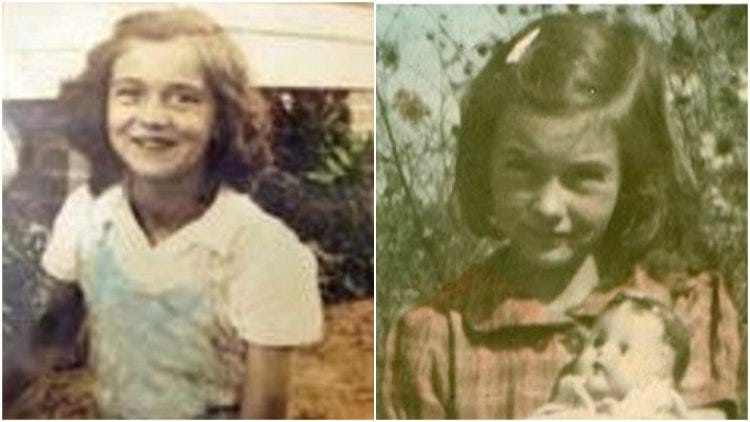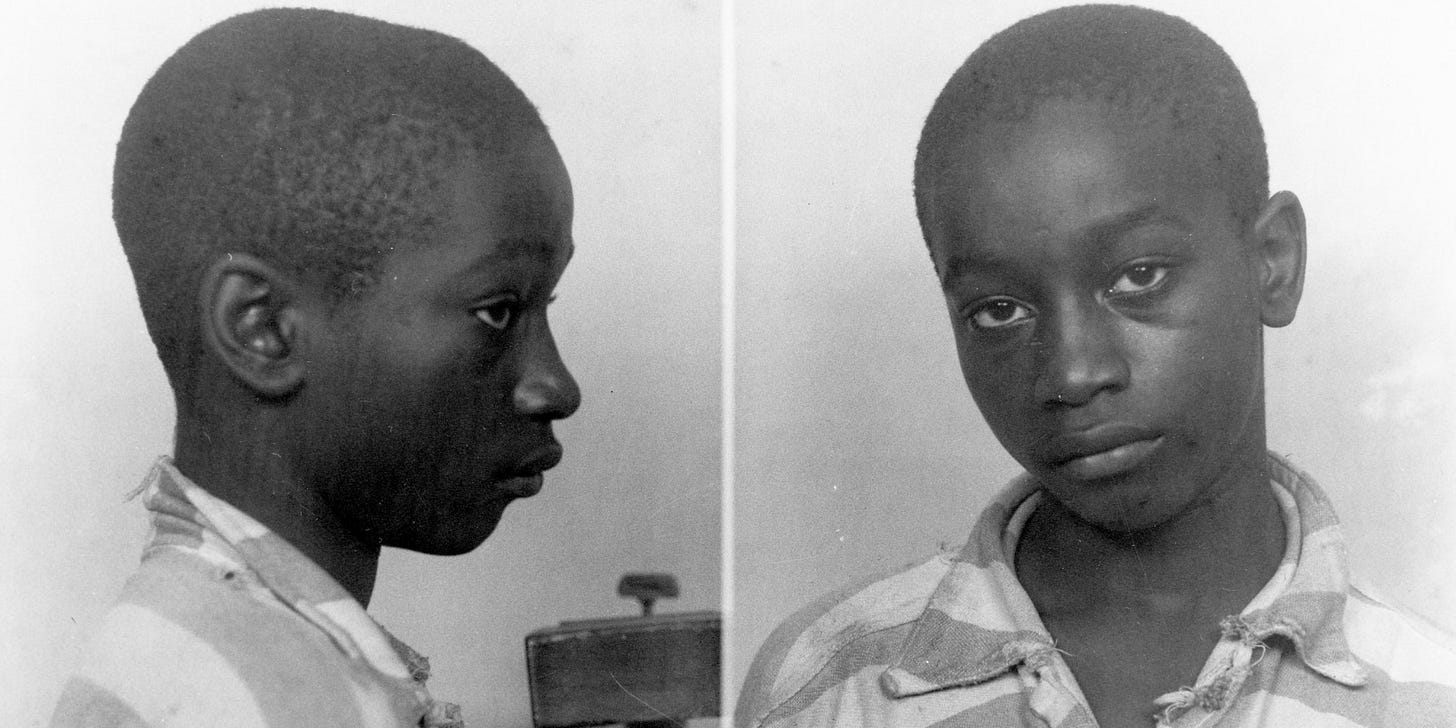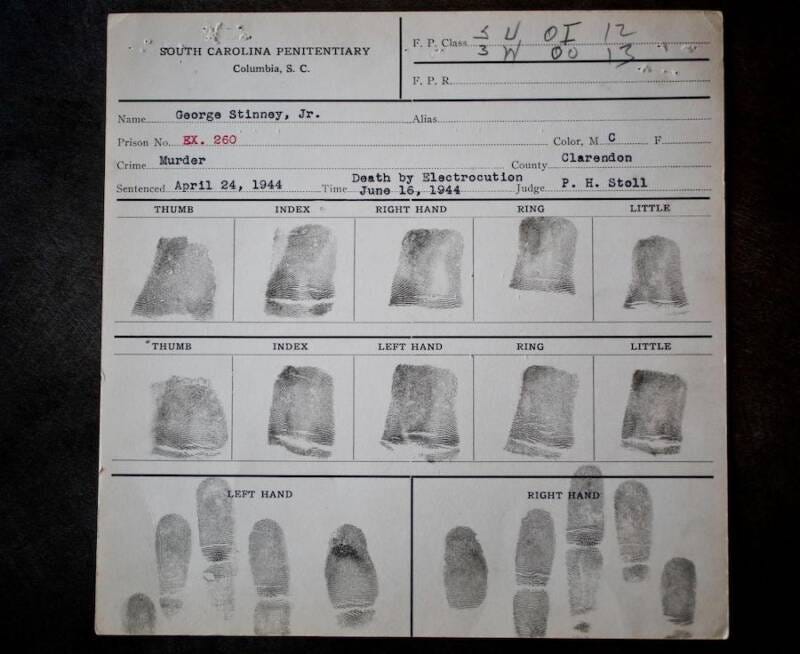Alcolu, South Carolina, is a small unincorporated community located about 70 miles northwest of Charleston. In 1944 it was a segregated mill town, with the railroad separating the whites and blacks who lived there. In March of that year, it was also the site of a gruesome double murder. And while these murders were a great injustice, so was the result of the investigation that followed.
On the day of the murders, two young white girls … Betty June Binnicker (11 years old) and Mary Emma Thames (7 years old) … were riding their bikes around Alcolu collecting flowers. They rode up to a young black boy and his younger sister and asked them if they knew where maypops could be found, a maypop being the edible fruit of passionflowers. What’s not known is whether or not the boy and his sister knew where the maypops were. What is known is that they were the last people to see the two girls alive.
When the two girls failed to return home, hundreds of Alcolu residents, blacks and whites … including the father of the children who had last seen them … began a frantic search. They were found the next day, dead in a muddy ditch. There were no signs of a struggle, but the two girls had clearly met horribly violent deaths. Betty June had suffered at least 7 blows to the head that left the back of her skull, according to the medical examiner, “nothing but a mass of crushed bones.” Mary Emma was found with a large cut above her right eyebrow, and a hole that had been bored through her forehead and into her skull.
There was a rumor circulating that the girls had made a stop at the home of a prominent white family, but the police never investigated, followed up on, or even considered the involvement of a prominent white citizen. But when Clarendon County law enforcement officers were told by a witness that the girls had been seen talking to two black children, they acted on that tip without hesitation.
George Stinney Jr. was only 14 years old when police showed up at his house. The young boy was handcuffed and subjected to hours of interrogation. Neither his parents, an attorney, nor any witnesses were in the room with the boy during this interrogation. Police subsequently claimed that Stinney had made a full confession, saying that he had killed the girls after a failed attempt to have sex with them. There was no written or recorded evidence of this confession, only the word of the white policeman, officer H.S. Newman, who had conducted the interrogation.
Stinney was detained at an undisclosed location … not even his parents were allowed to know where he was, ostensibly due to rumors of a possible lynch mob. After being detained and isolated for about a month, 14-year-old George Stinney Jr. was tried at the Clarendon County Courthouse for the murders of the two girls.
The trial was pretty much a formality supporting a conclusion that had already been reached. Stinney’s court-appointed attorney, Charles Plowden, made little effort at defense. Plowden called no witnesses nor presented any evidence to challenge the court’s predetermined conclusion. The only real evidence against Stinney was his alleged “confession,” which was only supported by the say so of the interrogating officer. Stinney’s parents … who had not seen him since he had been arrested … didn’t feel safe to even attend the trial, which was packed with 1,500 angry whites calling for Stinney’s head. This 14-year-old child was tried for murder with only strangers there to witness.
Stinney’s so-called “trial” lasted only two hours. The all-white jury then deliberated for all of 10 minutes. It should surprise no one that the jury found Stinney guilty of the murders and made no recommendations for any mercy. The court sentenced Stinney to die by electrocution.
The only dim light in this otherwise dark history was that the verdict prompted outrage and protest. Black and white groups alike, particularly from religious groups, appealed to Governor Olin Johnston to show mercy to the young boy, and his office was flooded with letters and telegrams asking him to intervene on Stinney’s behalf. But the governor turned a deaf ear to all such appeals and allowed the verdict and the sentence to stand.
Today, June 16th, 1944, the 14-year-old Stinney, clutching a bible, was marched into the execution chamber at the South Carolina State Penitentiary in Columbia. A striped jumpsuit hung loosely on his 95-pound frame, and the executioner had trouble properly strapping him in because he was too small for the adult-sized chair. When asked if he had any last words, Stinney quietly replied “no, sir.” The witnessing doctor then asked, “you don’t want to say anything about what you did?” Stinney again replied simply, “no, sir.” With that, authorities threw the switch, and George Stinney, Jr. became and remains the youngest person executed in United States history.
83 days after arrest, a two hour “trial,” and a ten-minute “deliberation” a 14-year-old child was executed for a crime for which there was little to no evidence of his guilt. It would be 70 years before his conviction was finally overturned and the true scope of this injustice was recognized. His siblings had never stopped trying to prove his innocence, claiming that his “confession,” if it ever happened, was coerced. His sister Aimie had never been allowed to testify that, at the time of the murders, she and George had been tending the families’ cow. Nor was the testimony of George’s cellmate allowed, who claimed that Stinney had consistently stated that he had not committed the murders, recalling one conversation where George lamented “I didn’t do it. Why would they kill me for something I didn’t do?”
On December 17, 2014, Judge Carmen T. Mullen, calling Stinney’s death sentence a “great and fundamental injustice,” vacated the murder conviction, bringing great relief and comfort to Stinney’s living relatives who remarked that they were grateful to have lived long enough to see their brother’s conviction overturned.
The 2018 short film “83 Days” tells the story of Stinney’s wrongful conviction and execution.
NEXT WEEK: William Penn pens a Treaty








Appreciate you shining a light on this little known and massively heartbreaking story.
Cases like this are why I am and will always be opposed to the death penalty. With Life sentences there is always a chance for wrongful convictions to be overturned. It is a double tragedy when someone innocent dies for a crime they did not commit.